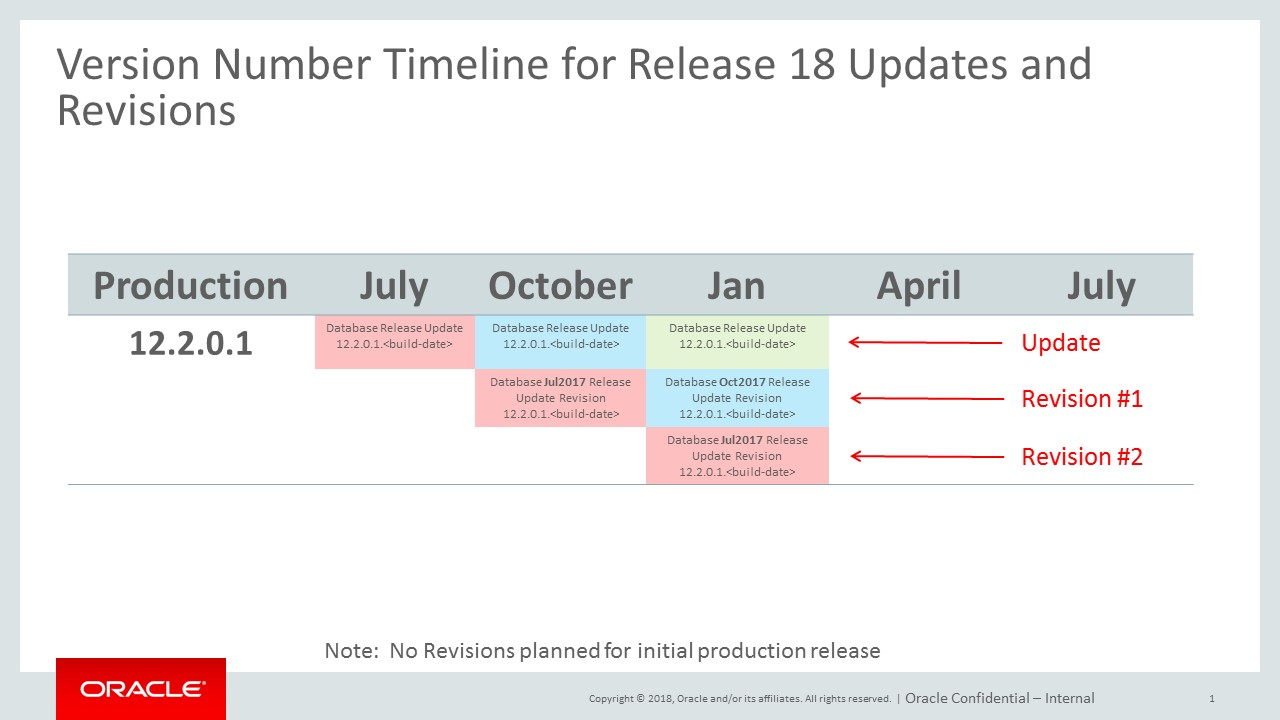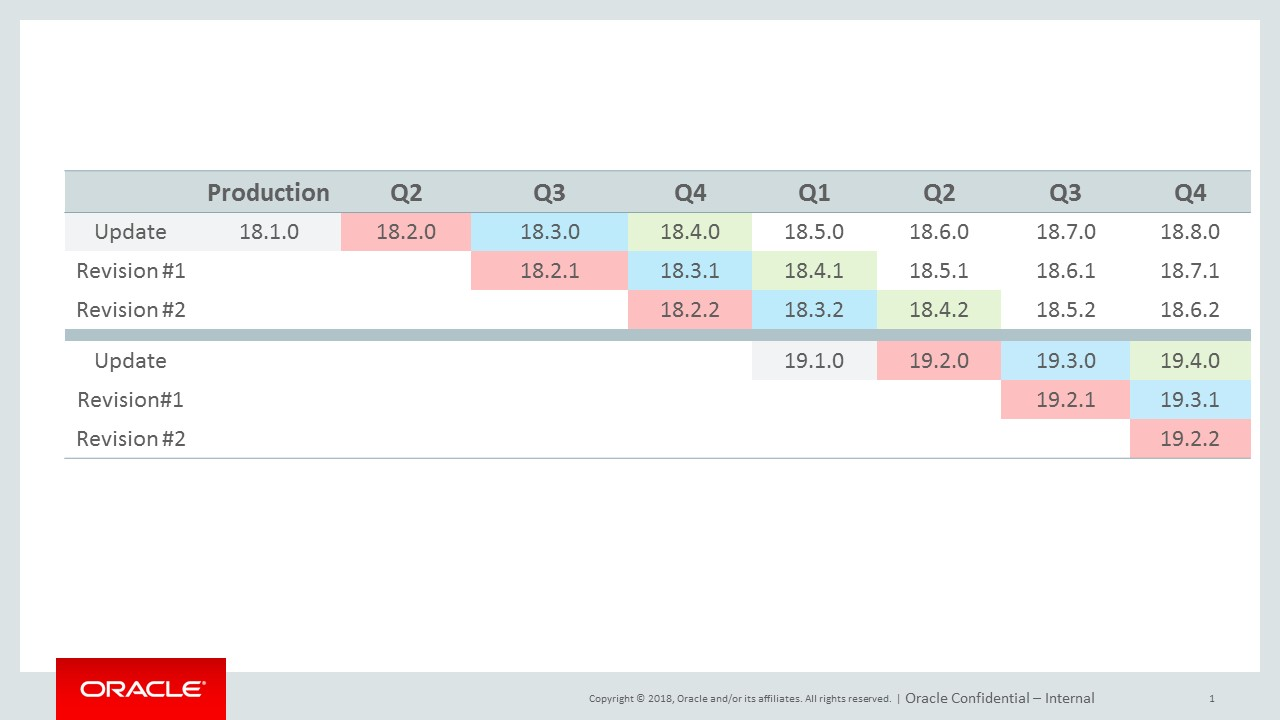Overview
Beginning in July 2017, Oracle has transitioned to a more flexible and responsive strategy for the database software release process. These changes only affect Database and Grid Infrastructure release 12.2 or later. The primary goals of this strategy are twofold:
1. Embrace a less complex software release process
a. Oracle wants to get new features to market every year instead of waiting several years
b. Oracle desires to improve database release quality by reducing the number of software changes released at one time
2. Provide customers with a more flexible way to both:
a. Efficiently adopt
Bug fixes when needed and decrease the need for interim one-offs (like
the DB Proactive BP provides for 12.1.0.2)
b. Efficiently keep
current with Quarterly Security Updates once their environment becomes
stable (like the PSU provides for 11.2.0.4 and 12.1.0.2)
注:从2017年7月开始,Oracle已经过渡到一种更灵活、更快速响应的数据库软件发布过程。
To accomplish the goals of this strategy, the following database software changes are being implemented:
Patching Changes - Release Updates and Release Update Revisions
Beginning with the next Database release (originally designated 12.2.0.2) planned for 2018, new feature releases of the database product are being provided annually, and patchsets are no longer being released.
To support both security-related fixes and high-priority non-security fixes to each feature release, quarterly Release Updates (Updates) are being provided each January, April, July and October. Oracle's quarterly Updates contain fixes for the bugs that customers are most likely to encounter:
- Query optimizer bug fixes, which were not allowed in PSU's and BP's from earlier releases are included disabled by default in the Updates.
- Updates include fixes for security vulnerabilities.
- Updates go through extensive testing at Oracle, covering functional, stress, performance, and destructive testing scenarios.
- Applying Updates in a timely manner reduces the likelihood of rediscovery of known issues.
- Updates can be installed with zero down time via RAC rolling.
Figure 1: 12.2.0.1 Database Release - Naming convention for Update/Revision
- Release Update - Database <Quarter> Release Update 12.2.0.1.<build-date>
- Release Update Revision - Database <Quarter> Release Update Revision 12.2.0.1.<build-date>

Release Version Numbering Changes
Beginning in 2018, a new numbering schema for the database software is implemented. Instead of a legacy nomenclature such as 12.2.0.2, a three (3) field format consisting of: Year.Update.Revision is used, such as 18.1.0. This allows clear indication of:
- the feature release designation of the database software (the first field)
- the quarterly Update (the second field)
- the quarterly Revision (the third field)
Figure 2: Release and Update Timeline
